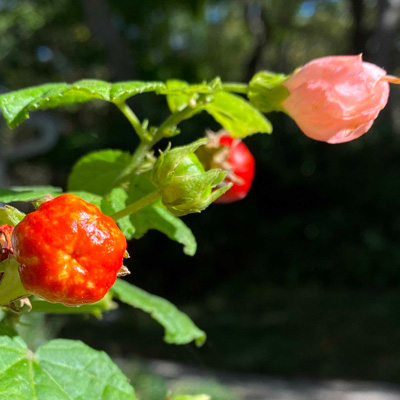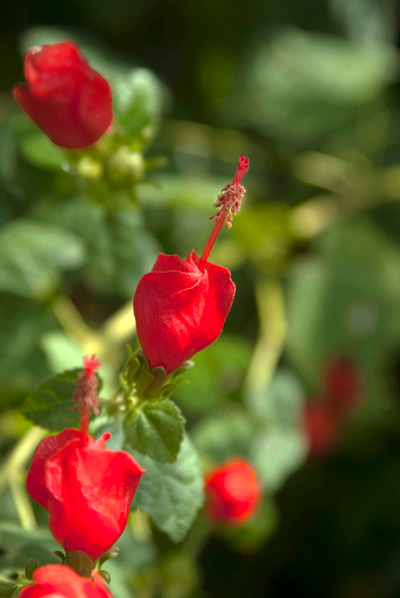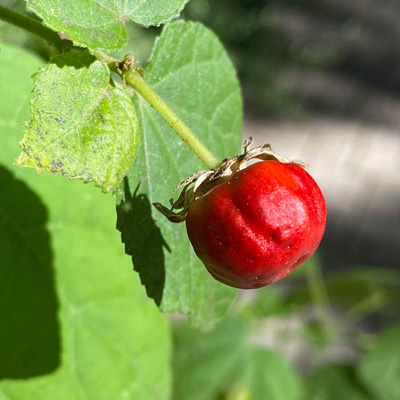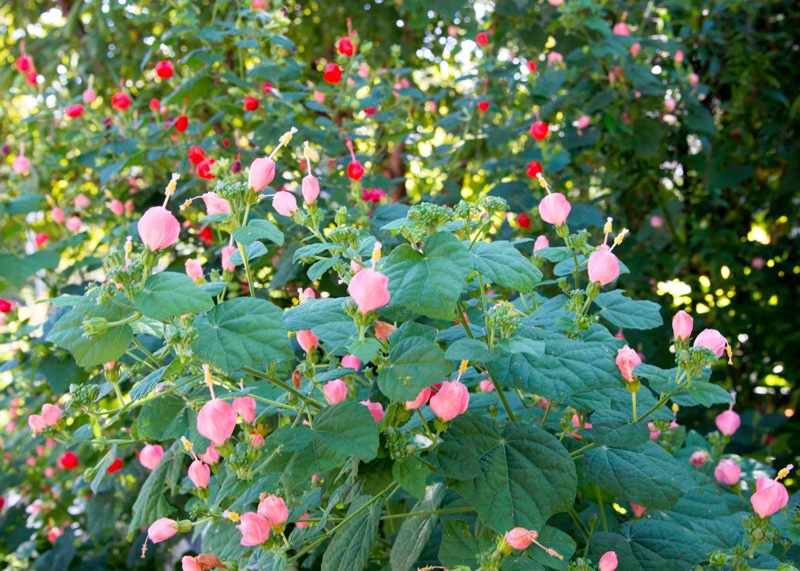Odd Little Story, Fun to Research

Google “Turk’s cap Malvaviscus arboreus var. drummondii.” You’ll come up with dozens of matches. They’ll range from Master Gardener websites to those of native plant societies and major botanic gardens as well.
This close cousin of tropical and hardy hibiscus is native to South Central and Southwest Texas, the southeastern U.S. and into Mexico. It’s well known and it’s popular among gardeners.
All of those websites will tell you that it’s called “Turk’s cap” because its petals wrap loosely in a spiral, only partially opening, giving the appearance of the Turkish headdress. OK. I bought in on that for years. (I probably still do. But I’ll continue my story anyway.)

When I saw my friend Greg Grant’s introduction which he named ‘Pam Puryear,’ and when I saw it loaded with ripe and ripening fruit this week, it made me wonder if some botanist way back in the “olden days” (to quote a grandchild) might have named the plant “Turk’s cap” for the fruits’ resemblance to Turkish turbans more than the flowers’.

I even ended up in Etsy, where handmade Turkish turbans are offered for sale. I could probably make a case if I cared to, but when another friend (that would be Steven Chamblee) took me off on a tangent to Mars by saying simply, “Yeah. They look like little apples. Kinda taste like apples, too. If you don’t mind really hard seeds.”
So, my theory of the origin of the name “Turk’s cap” is now officially sent to its room. It won’t be coming out again.
But I did see one other interesting note about an alternative common name. Horticulture Magazine used the term “sleeping hibiscus” because its flowers never fully open.
That one’s out there for you to use if you want it. I’ll stick with Turk’s cap.
Late-season care…
Your Turk’s cap will freeze to the ground soon. That’s normal. Trim the plants off to within a few inches of the soil line. They’ll come roaring back next spring.

If you’re looking for a superior plant for hummingbirds, butterflies and bees, this shrubby perennial that grows to 4 to 6 ft. tall is your winner. It’s good in part shade to mostly sun. It’s tolerant of drought, but it will put on its best show if you keep it moist.
Turk’s cap blooms from spring through summer and well into fall (as you can see), and it comes in vivid red, also pink, even sometimes with variegated foliage.
